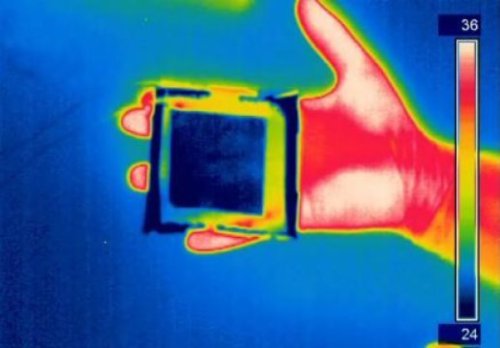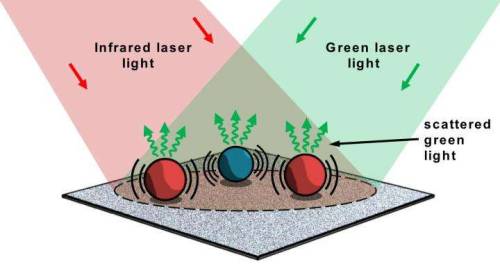#infrared light
Thermal camouflage disguises hot and cold
Hunters don camouflage clothing to blend in with their surroundings. But thermal camouflage – or the appearance of being the same temperature as one’s environment – is much more difficult. Now researchers, reporting in ACS’ journal Nano Letters, have developed a system that can reconfigure its thermal appearance to blend in with varying temperatures in a matter of seconds.
Most state-of-the-art night-vision devices are based on thermal imaging. Thermal cameras detect infrared radiation emitted by an object, which increases with the object’s temperature. When viewed through a night-vision device, humans and other warm-blooded animals stand out against the cooler background. Previously, scientists have tried to develop thermal camouflage for various applications, but they have encountered problems such as slow response speed, lack of adaptability to different temperatures and the requirement for rigid materials. Coskun Kocabas and coworkers wanted to develop a fast, rapidly adaptable and flexible material.
Post link
New microscope chemically identifies micron-sized particles
Researchers have developed a microscope that can chemically identify individual micron-sized particles. The new approach could one day be used in airports or other high-security venues as a highly sensitive and low-cost way to rapidly screen people for microscopic amounts of potentially dangerous materials.
In the journal Optics Letters, from The Optical Society (OSA), researchers from the Massachusetts Institute of Technology’s Lincoln Laboratory, USA, demonstrated their new microscope by measuring infrared spectra of individual 3-micron spheres made of silica or acrylic. The new technique uses a simple optical setup consisting of compact components that will allow the instrument to be miniaturized into a portable device about the size of a shoebox.
“The most important advantage of our new technique is its highly sensitive, yet remarkably simple design,” said Ryan Sullenberger, associate staff at MIT Lincoln Labs and first author of the paper. “It provides new opportunities for nondestructive chemical analysis while paving the way towards ultra-sensitive and more compact instrumentation.”
Post link
Infrared lasers reveal unprecedented details in surface scattering of methane
When molecules interact with solid surfaces, a whole range of dynamic processes can take place. These are of enormous interest in the context of catalytic reactions, e.g. the conversion of natural gas into hydrogen that can then be used to generate clean electricity.
Specifically, the interaction of methanemolecules with catalyst surface such as nickel is of interest if we are to gain a detailed and meaningful understanding of the process on a molecular level. But studying scattering dynamics of polyatomic molecules such as methane has been challenging because current detection techniques are unable to resolve all the quantum states of the scattered molecules.
The lab of Rainer Beck at EPFL has now used novel infrared laser techniques to study methane scattering on a nickel surface for the first time with full quantum-state resolution. Quantum-state resolved techniques have contributed much to our understanding of surface-scattering dynamics, but the innovation here was that the EPFL team was able to extend such studies to methane by combining infrared lasers with a cryogenic bolometer: a highly sensitive heat detector cooled to 1.8 K that can pick up the kinetic and internal energy of the incoming methane molecules.
Post link



